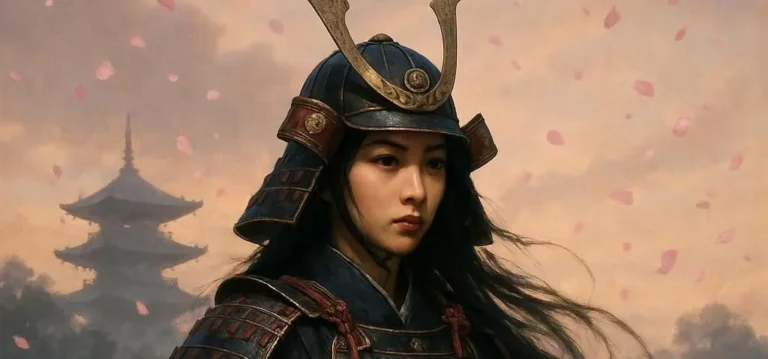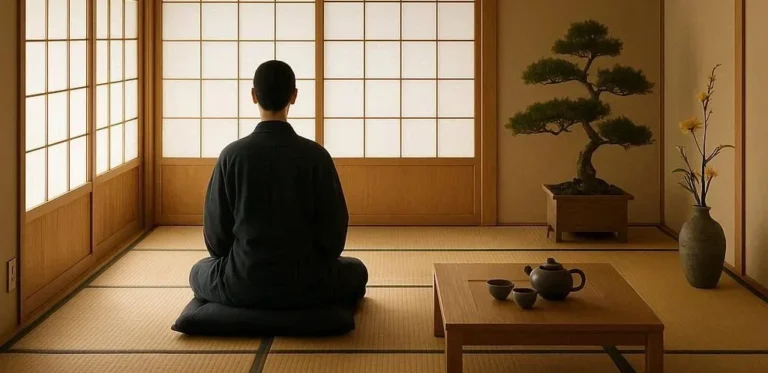508 views The Armor of Honor: Meaning Behind Samurai Battle Gear
Introduction
When people think of the samurai, images of a lone warrior in polished lacquered armor, a katana glinting in the glow of sunrise, and the echo of a sword’s strike usually come to mind. Yet beneath that iconic silhouette lies a complex tapestry of symbolism, craftsmanship, and social hierarchy. Samurai armor was more than protection—it was a visual declaration of honor, allegiance, and the warrior’s place within the feudal order. In this post, we’ll unravel the layers that turned metal and silk into an emblem of the Japanese spirit, exploring why every plate, chain, and emblem mattered on and off the battlefield.
The Transformation of Protection into Personal Statement
From Arab to Japanese: The Evolution of Armor
The first samurai armor emerged in the 12th century, influenced by the Chinese and Korean designs that reached Japan via trade and conflict. Initially, samurai wore simple leather and cloth jackets for mobility. As firearms and edged swords gained prominence, there arose a need for more robust, especially when confronting armored infantry.
By the Muromachi period (1336–1573), designers began incorporating iro ha (color plate) and tetsubo (iron rings) into armor. These not only offered better defense but also allowed samurai to personalize their gear with clan crests or personal mon (family symbols) etched into the plates. The armor’s appearance began reflecting a warrior’s loyalty, rank and personal ethos.
The Moral Function of Armor
A samurai’s bushido—the “way of the warrior”—depended not only on personal valor but also on outward conduct. Channels of status and accountability emerged through armor. Trusted lieutenants could distinguish their master’s honor from an ordinary soldier’s by looking at the crest and patterns on the armor. When a ronin (masterless samurai) returned to the streets, his armor—as opposed to his sword—betrayed his lack of political backing.
Anatomy of Samurai Armor
Samurai armor was a modular system; each component tailored to the type of combat or ceremonial function. Understanding the function of each can enlighten the symbolism attached.
| Component | Description | Symbolism |
|—|—|—|
| Do (胸) | Chest plate with a lacquered inner lining | Do means body or chest, the core of the warrior. A smooth, polished surface can symbolize inner calm and spiritual cleansing—central to samurai ethos.
| Kote (袖) | Armoured sleeves extending to the elbow | Kote control movement at the wrists (important for katana draw). Visually, kote’s entwined rings hint at the interconnectedness of duty.
| Fukuro (袋) | Trousers or ‘sack’ protective panel | The fukuro resembles a “sac” that protects the vital area; its design suggests containment of righteousness within the warrior’s being.
| Kote (御手) | Lower limb armor | Provides stability with a contoured shape; its placement on the leg indicates the samurai’s role as the foundation for the army.
| Kusari (繞) | Chainmail – often used on shoulders, hips, and torso | The interlocking links of kusari symbolize unity; also historically resembled a battlefield network—social bonds between peers.
| Men (面 or 兜) | Helmet | The men’s visor (tsuba) could feature dragons or cranes—emblems of power, longevity, or spiritual guidance. Its shape projects authority.
| Sode (袖) | Shoulder stretches |
These components worked in concert. Yet each carried a separate meaning that combined to project overall identity.
Visual Storytelling: Crests, Colors, and Patterns
Crests: The Samurai’s Signature
Most armor displayed a mon (family crest) burned into the front of the breastplate or distributed across multiple plates. The mon was the most recognizable symbol, used to command respect on the battlefield. It could also signal alliances in feudal politics; a union of crests indicated a marriage or war pact.
In ceremonial situations, samurai would sometimes swap a plain do for a boke (decorated armor) from their domain’s pavior. The use of different crests for host or guest signaled diplomatic subtlety.
Color and Lacquer: A Tale of Status
The lacquer used on samurai armor was more than aesthetic. Certain stains like kuro (black) and shiro (white) had specific connotations. In the early Edo period, Edo Tax Code limited the richest shoguns to black lacquer, while commoners had to stay with natural metal or dull paint. Hence, the color of armor could tell a viewer the wearer’s political rank.
Colors like kōryō (deep blue) were nicknamed for the calm ocean, reflecting a samurai’s steadiness. Black denoted the, while red plates on ha (shoulders) remind of military readiness—fire and excitement.
Motif Patterns and Significance
Beaded threadwork (shibori), and other embroidered motifs gave armor a personal touch. Common motifs included:
- Kirin – A mythical creature signifying prosperity.
- Kappa – A protective water spirit, signifying agility.
- Dragon – Power and authority.
- Cranes – Longevity and peace.
A combination of these symbols reflected a samurai’s identity and aspirations. In some realms, the presence of a crane on a warrior’s chest plate was a remembrance of the daggers of the sea – martial virtue extending beyond terrestrial conflict.
Armor as a Symbol of Social Order
The Feudal Chain of Responsibility
Armor design reinforced the hierarchical structure. A low-tier samurai from a minor hatamoto clan could wear a simple tsuke (corason) while elite retainers had ornate surfaces. This visual hierarchy demanded discipline and unity.
If a samurai did not revolt or challenge for higher rank, his armor continued to be his status-signifying artifact. When an officer was promoted, the ha of the armor would sometimes be refurbished with advanced lacquer and symbols. This idea cultivated a social sense of accountability—cemented by the visible change in armor.
Armor and the Code of Kenjutsu
Kenjutsu schools (ryū), such as Itto-ryū or Yagyu Shinkage-ryū, taught distinct sword styles, each with preferences for body coverage. For example, the jida-ryū had a “cuck o” shaped plate that protected the chest during kata demonstrations. Wearers were expected to achieve the elite techniques of ryū while still riding the complex terrain of battlefield politics. Thus, the armor was a lien between martial skill and military hierarchy.
Modern Relevance and Cultural Memory
Samurai armor still echoes through contemporary media—films, anime, video games, and even contemporary fashion. Yet beyond entertainment, the armor’s symbolic messages adapt to modern contexts.
Cultural Heritage and Education
Clans today display heritage samurai armor in local museums. Through exhibitions, the public sees how armor encompassed artistry and symbolic functions. Education about the samurai class can use armor to discuss feudal governance, cultural norms, and early modern innovation.
Symbolic Legacy in Corporate Identity
Many Japanese firms adopt a bō (shield) or kōjin (superhuman) crest in logos, suggesting robust endurance or team solidarity. The idea of a net of interlocking plates is similar to our corporate structure: protected, yet adaptable; secure, yet collaborative.
Fashion Statements
In fashion houses, samurai-inspired designs borrow ha patterns or men silhouettes to evoke strength. The assumption is that a well-designed fabric can incorporate chainmail structure, giving the wearer an aura of protection and enlightenment—a modern, pseudo‑samurai identity.
Conclusion
The armor of the samurai was an integrated expression of artistry, spirituality, politics, and martial strategy. Each plate, color, and crest recorded the warrior’s personal honor, social rank, and loyalty. On the battlefield, armor acted as a shield and a true statement of identity—glossy lacquer signaling status, a crest signaling kinship, and intricate motifs reminding the wearer of his virtuous code.
Through centuries of evolution, samurai armor remains a persuasive contributor to the cultural narrative. Understanding its layers enriches our perspective on the samurai ethos: disciplined, honorable, and profoundly attuned to the symbolic power of attire. May the legacy of this “Armor of Honor” continue to inspire individuals who desire to fuse purpose with protection, even in our digital age.






